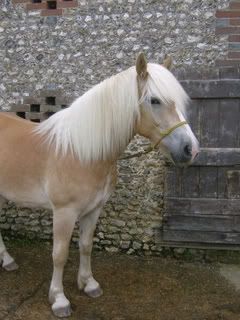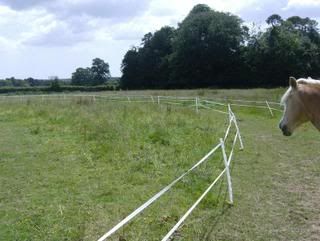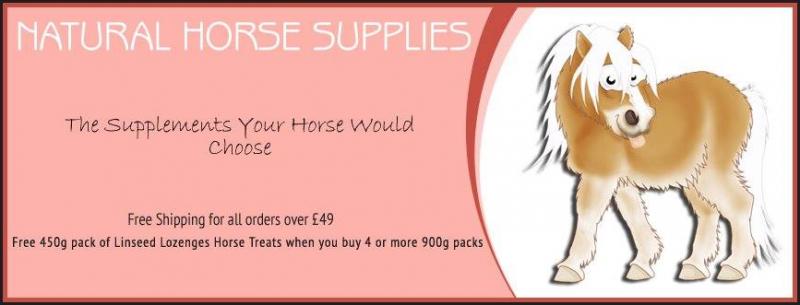Managing a Good Doer
As the owner of 2 good do-ers, Bailey (Haflinger) and Rummi (New Forest) the health risks of them being over weight are never far from my mind.
This quote has been taken from the ILPH website who have launched a 'The Right Weight' campaign
"Any animal that carries excess body weight over a prolonged period is likely to suffer from health problems. Aside from the obvious things such as problems with the heart, lungs and joints, overweight horses are at an increased risk of laminitis and hyperlipemia, both of which are potentially fatal.
For those of you who aren’t already aware of these, laminitis is a condition of the hooves where the hoof wall starts to separate from the underlying structures and in severe cases the bone actually erupts through the sole of the foot. As you can imagine this is an incredibly painful condition and is more common than you might think. Laminitis is a recurrent problem, so it is true to say that ‘once a laminitic always a laminitic’.
Whilst this is widely recognised as a problem in small fat ponies it can and does affect any horse of any breed. Although possible to treat if caught early enough, many horses in the later stages must be put down.
Hyperlipemia is caused when the horse’s fat stores mobilise into the blood stream. This is usually triggered by sudden starvation i.e. crash-dieting or some other stress factor such as travelling or exercise. In a high percentage of cases this will lead to chronic liver failure and death. Liver failure is a horrific way to die with many of the animals concerned losing sight, coordination and control of breathing amongst other things."
http://www.ilph.org/ukoperations_details.asp?id=744 

I must firstly make it clear that this advice is based on what I have read and experienced. In the event of the onset of laminitis, don’t delay, call a vet! Even if you’re not sure, phone your vet for advice.
On the positive side, with correct veterinary care and management, even the worst cases of can, and do, make full recoveries, but it is not an easy journey.
Firstly, READ READ READ! There is SO much information available, find out about it BEFORE your horse gets laminitis, so hopefully it WON’T!!! The Laminitis Trust is always a great source of information: http://www.laminitis.org
Ideally, I’d like to be able to keep my horses on acres of rough pasture, like you find in the New Forest or Exmoor/Dartmoor. This is high fibre/low sugar and they’d have to MOVE to find their food! They would also be able to source out the herbs another plants they require. Unfortunately, like many horses in the UK, mine are kept at a livery yard, that was a dairy 25 years ago, so the paddocks are rather rich and fast growing.
To stop them getting obese, I have to restrict their grazing. They live out 24/7 in a corridor system. 
This is a 12-15ft wide corridor around the outside of a 2.5 acre field using electric fencing. It is a good alternative to using a small little paddock, as they can still MOVE and run around their ‘racetrack’ if they wish! In the winter, I just gradually move parts of the fence inwards, to let them graze the long, stemy grass.
As their grazing is restricted, it is important to give them a good vitamin and mineral supplement.
I also give my horses’ milk thistle in the peak grass growing seasons, as it helps maintain a healthy liver which is vital for managing the toxins linked to laminitis.
Magnesium is an important mineral that is low in many horses' diets, particularly in the spring and autumn when the fast-growing grass is low in magnesium. A magnesium supplement can help reduce fatty deposits, such as cresty necks, and is important for good hoof quality.
I have also recently had great success using Shires grazing muzzles to restrict their grass intake. Unfortunately, Bailey has a passion for breaking through electric fencing, getting to the rested, longer grass in the central section. I decided to muzzle them both but give them restricted access to the longer, older grass. This worked really well as they had fibre 24/7, keeping their digestive systems healthy, but their intake was restricted by up to 75%!
UPDATE: I have now managed to link my corridor fencing to the mains fencing, so finally I have a fence that Bailey doesn't get through. My system now is such that during the spring/summer. them have their narrow corridor around the outside, with very well soaked hay if the grass gets too low. I judge this by monitoring their dung production! I poo-pick every day, and if they produce less that 8 piles each a day, I give them some soaked hay. If they are producing more than 15 each a day, I reduce the grazing available. My ideal is 8-12 piles of dung each, of brownish colour. YES! I am a dung-aholic!
I soak the hay for up to 24 hours but rinse it very thoroughly before feeding. I then spread this around the track to enocurage them to keep moving.
In the winter, I then gradually bring the fence in for them to eat the older rested grass. I constantly monitor the number, colour and consistancy of their dung - sloppy green dung is a big warning sign! I also watch Rummi's neck as if he is getting too much sugar, his neck starts to get cresty (Bailey gets a big bum!).
I wish I had all the answers to stop laminitis, but I don’t. All we can do is try to manage our horses in the best way and be educated about laminitis and any recent research.
![]()


